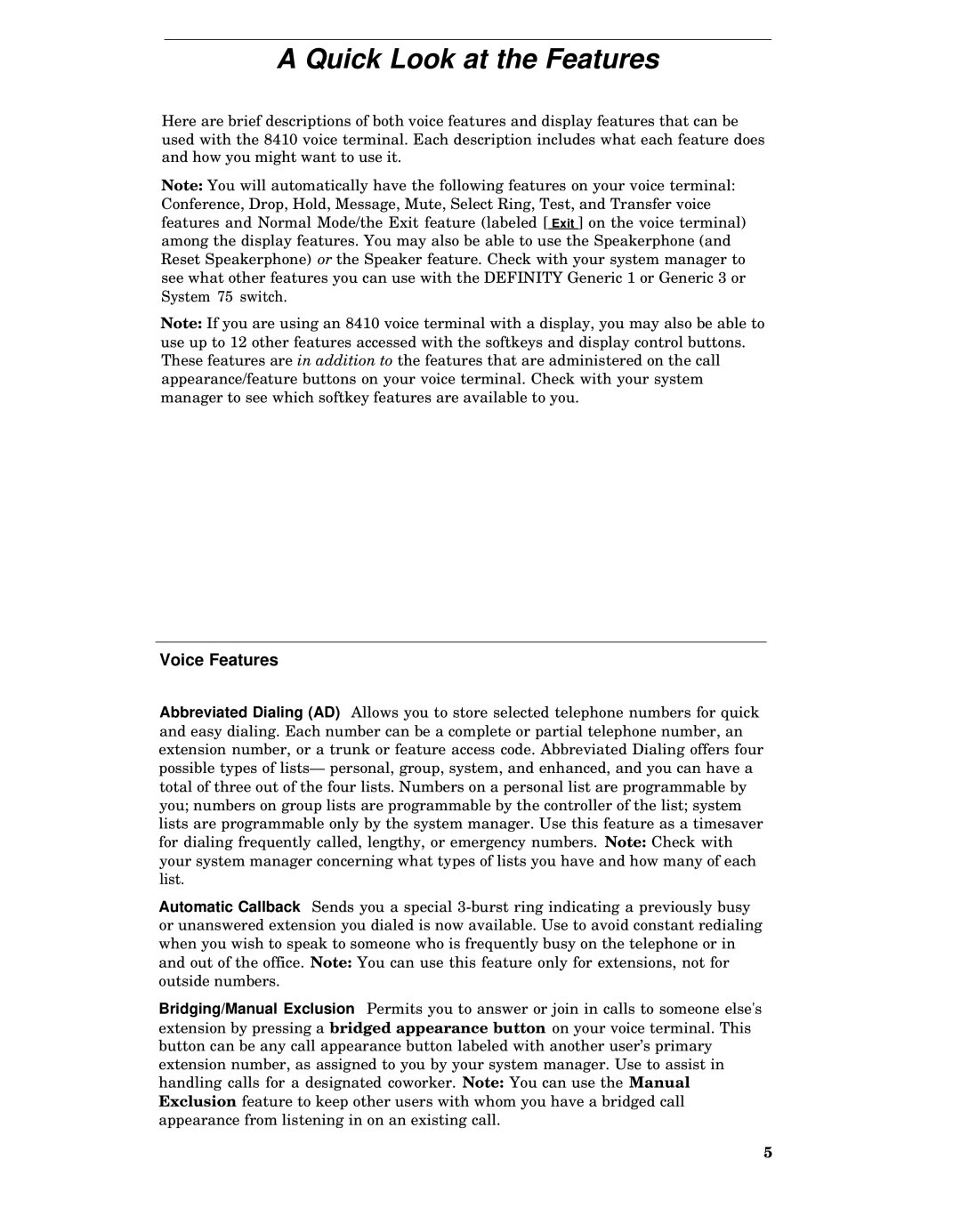
A Quick Look at the Features
Here are brief descriptions of both voice features and display features that can be used with the 8410 voice terminal. Each description includes what each feature does and how you might want to use it.
Note: You will automatically have the following features on your voice terminal: Conference, Drop, Hold, Message, Mute, Select Ring, Test, and Transfer voice features and Normal Mode/the Exit feature (labeled [ Exit ] on the voice terminal) among the display features. You may also be able to use the Speakerphone (and Reset Speakerphone) or the Speaker feature. Check with your system manager to see what other features you can use with the DEFINITY Generic 1 or Generic 3 or System 75 switch.
Note: If you are using an 8410 voice terminal with a display, you may also be able to use up to 12 other features accessed with the softkeys and display control buttons. These features are in addition to the features that are administered on the call appearance/feature buttons on your voice terminal. Check with your system manager to see which softkey features are available to you.
Voice Features
Abbreviated Dialing (AD) Allows you to store selected telephone numbers for quick and easy dialing. Each number can be a complete or partial telephone number, an extension number, or a trunk or feature access code. Abbreviated Dialing offers four possible types of lists— personal, group, system, and enhanced, and you can have a total of three out of the four lists. Numbers on a personal list are programmable by you; numbers on group lists are programmable by the controller of the list; system lists are programmable only by the system manager. Use this feature as a timesaver for dialing frequently called, lengthy, or emergency numbers. Note: Check with your system manager concerning what types of lists you have and how many of each list.
Automatic Callback Sends you a special
Bridging/Manual Exclusion Permits you to answer or join in calls to someone else's extension by pressing a bridged appearance button on your voice terminal. This button can be any call appearance button labeled with another user’s primary extension number, as assigned to you by your system manager. Use to assist in handling calls for a designated coworker. Note: You can use the Manual Exclusion feature to keep other users with whom you have a bridged call appearance from listening in on an existing call.
5
